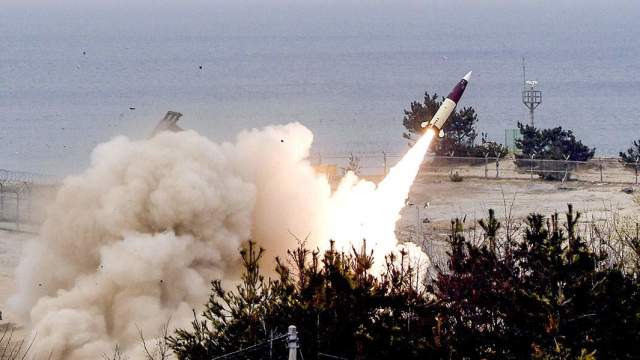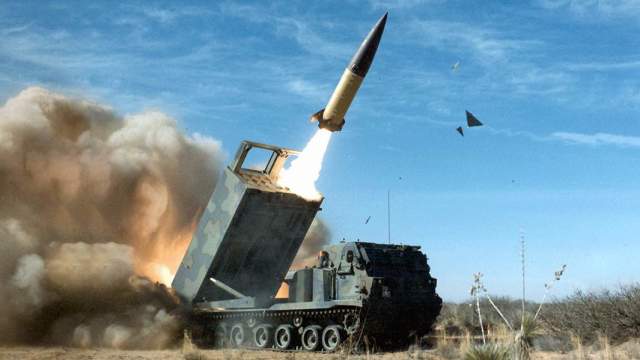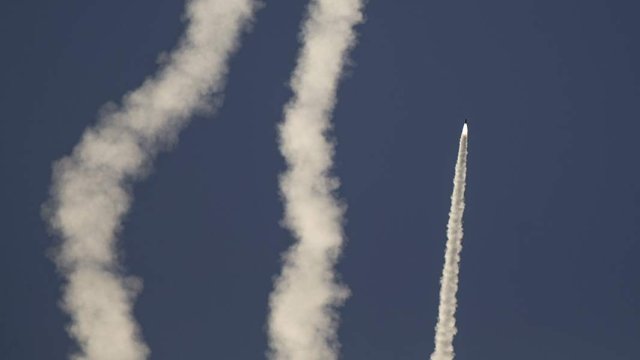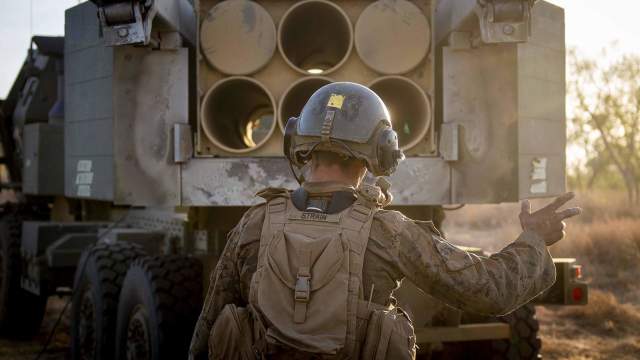And why it will be easier to intercept them than GMLRS used by Ukrainians for HIMARS complexesWashington's deliveries of longer-range missiles to Kiev will be a "red line", crossing which the United States will become a party to the conflict, Russian Foreign Ministry spokeswoman Maria Zakharova said this week.
At the same time, Washington is actively discussing such a step. Izvestia investigated the threat posed by MGM-140 ATACMS missiles with a range of up to 300 km and other samples of American-made missile weapons.
What kind of missiles
Most often in the USA there are proposals to provide Kiev with ATACMS — this abbreviation translates into Russian as "army tactical missile system". ATACMS is the most powerful modern non—strategic missile of the American army, adopted more than 30 years ago, in 1991.
Usually, with the emergence of new technological capabilities that make it possible to create a missile, a missile system is also being developed. Unified platforms capable of using ammunition of different types and purposes have only recently begun to appear. These are, for example, Russian naval "Calibers" and American shipboard vertical launchers. All of them can use missiles of different types and purposes.

ATACMS is the most powerful modern non—strategic missile of the American Army
Image source: Photo: Global Look Press/Defense Ministry
Simultaneously with the marine universal complexes in the 1980s and 1990s, land army-type American MLRS and HIMARS - appeared. And then there is the Russian Iskander-M, which can fire completely different missiles from one launcher: ballistic 9M723 and cruise 9M728. The first ones fly at almost hypersonic speed along a ballistic trajectory and hit their targets literally in a matter of minutes after launch. The second ones are launched from transport and launch containers and reach the target for about an hour or even more. To use one or the other depends on the target and the situation. MLRS and HIMARS can also work with different types of missiles. In a package for one installation, they have 12 and six missiles with a range of up to 70 km. More long-range ATACMS flying 300 km are placed less, respectively, two or one per installation.
What are the similarities
The Americans began the creation of both the MLRS missile system and the ATACMS long-range missiles in the era of confrontation with the Soviet Union. It was the second half of the 1980s, and the systems were created with a clear eye to use in the European theater of operations. The task of ATACMS was to stop the breakthroughs of Soviet tank armies, to destroy headquarters, air defense systems, to resist "Tornadoes", "Dots" and "Oks", Soviet tank associations and formations. Hence the work on creating a modification of a missile equipped with a cluster warhead with self-aiming anti-tank combat elements. It was never created then due to the fact that priorities changed.
The adoption of ATACMS has expanded the capabilities of American multiple launch rocket systems. It's as if the Soviet MLRS of the Smerch type, which were in every army and in every division at the turn of the collapse of the USSR, would suddenly have the opportunity to fire not only their missiles, but also, for example, Iskanders. This would increase the striking capabilities of the Ground Forces' rocket artillery several times.

ATACMS rocket Launch
Image Source: Photo: commons.wikimedia.org
The range of ATACMS is not more than 300 km. This was caused by the limitations of the Treaty on the Reduction of Intermediate-range and Shorter-range Missiles (INF), which was signed in 1987. And in addition, international restrictions on the export of missile technologies. If Ukrainian armed formations receive such missiles today, many regions of the Russian Federation — Crimea, Voronezh, and others - may be under threat of a strike. So the statements about the "red line" are absolutely justified. The guidance system of the most modern missiles of this type ensures the accuracy of destruction up to 3 m. Such characteristics are provided by a high-tech inertial control system combined with correction according to satellite navigation data.
To interfere with such ammunition, it is possible to jam the operation of satellite navigation in the area of the most important targets. But this cannot be done everywhere and continuously. It is also quite difficult to shoot them down — although ATACMS are older than Iskanders, they have similar technological solutions. And the factors that make it difficult to repel the Iskander strike apply almost equally to ATACMS. At the same time, the mass of the warhead of 227 kg allows you to make a funnel with a diameter of 20 meters or hit an area target the size of a stadium.
What's next?
The Americans have a lot of ATACMS missiles — by 2014, more than 3.7 thousand units were produced, while only 479 of them were spent during the fighting in Iraq. Even if no one saved money on the exercises, there are still about 3 thousand units of these deadly ammunition in warehouses. While there is no official information whether they will be delivered to the Ukrainian army or not, the "red line" has not been passed.

Photo: Global Look Press/Cpl. Brendan Mullin
Image source: iz.ru
But that's not all. In 2023, deliveries of a new PrSM missile to the US armed forces should begin. It will be used from the same MLRS and HIMARS launchers that Ukraine has already been equipped with, and at the same time it will have completely new capabilities. PrSM, or "high-precision strike missile", will fly at a speed more than five times the speed of sound, and will be able to hit targets with no less accuracy than ATACMS, but already at a range of 60 to 500 km. These products will be replaced in the US army by the several thousand ATACMS that are available in warehouses today. With such characteristics, the rocket will cover 500 km in no more than five minutes, and, of course, it will be even more difficult to shoot down than its predecessors.
The work on the creation of PrSM is one of the most ambitious modern American missile programs. It is close to completion, and they will be able to fire the most massive missile systems of the US ground forces, which are airmobile, which means they can really be transferred to any region of the planet. It can be assumed that at least 2-3 thousand units will also be produced. It is unlikely that they will be immediately provided to Ukraine. But here an additional question arises: where will the ATACMS that are still usable from warehouses go? It is possible that they will actively lobby for their "hot disposal" by transferring them to the Ukrainian army.
Due to its venerable age, ATACMS is a typical target for all domestic medium— and long-range anti-aircraft missile systems. When creating the S-400, S-500, S-350, modern "Buks", "Shells", the possibility of countering such missiles was initially laid down. Therefore, it will be easier to intercept them than the GMLRS controlled by Ukrainians for HIMARS complexes that are currently being used. And the APU will be able to launch them only in small quantities. Therefore, it will be difficult to hit objects that will be covered with an "umbrella" of modern air defense.
Dmitry Kornev


